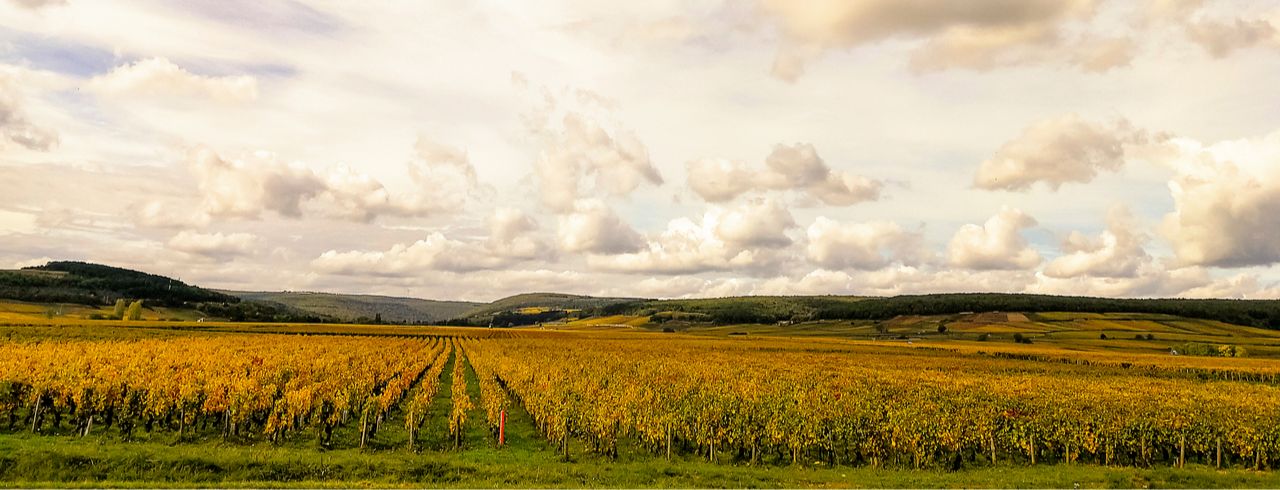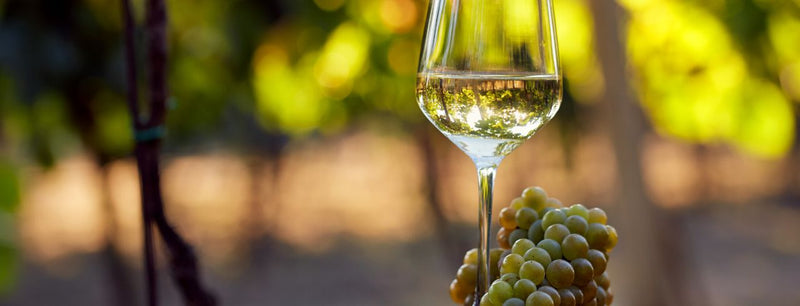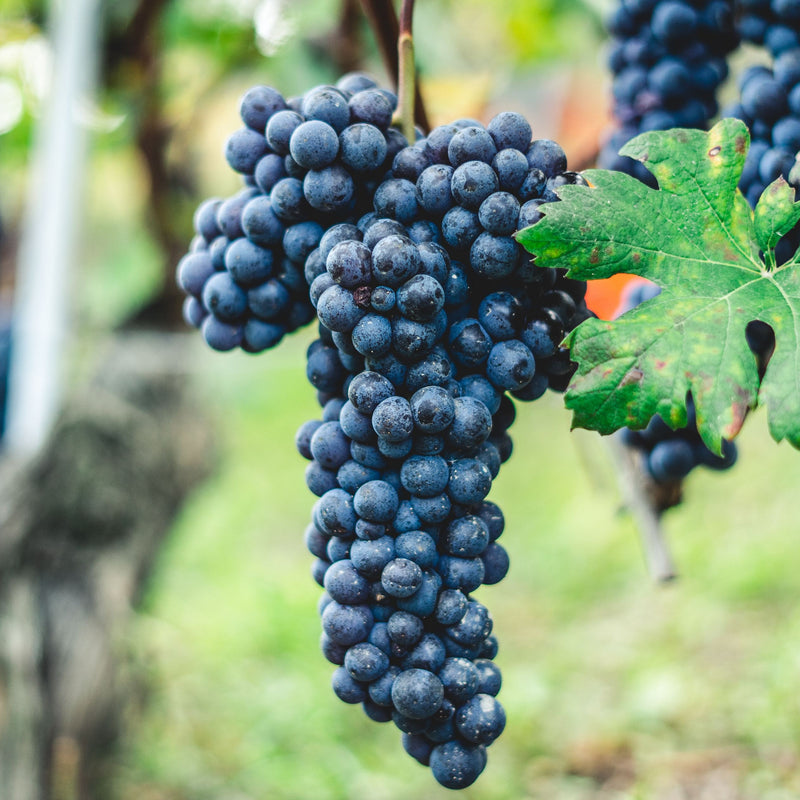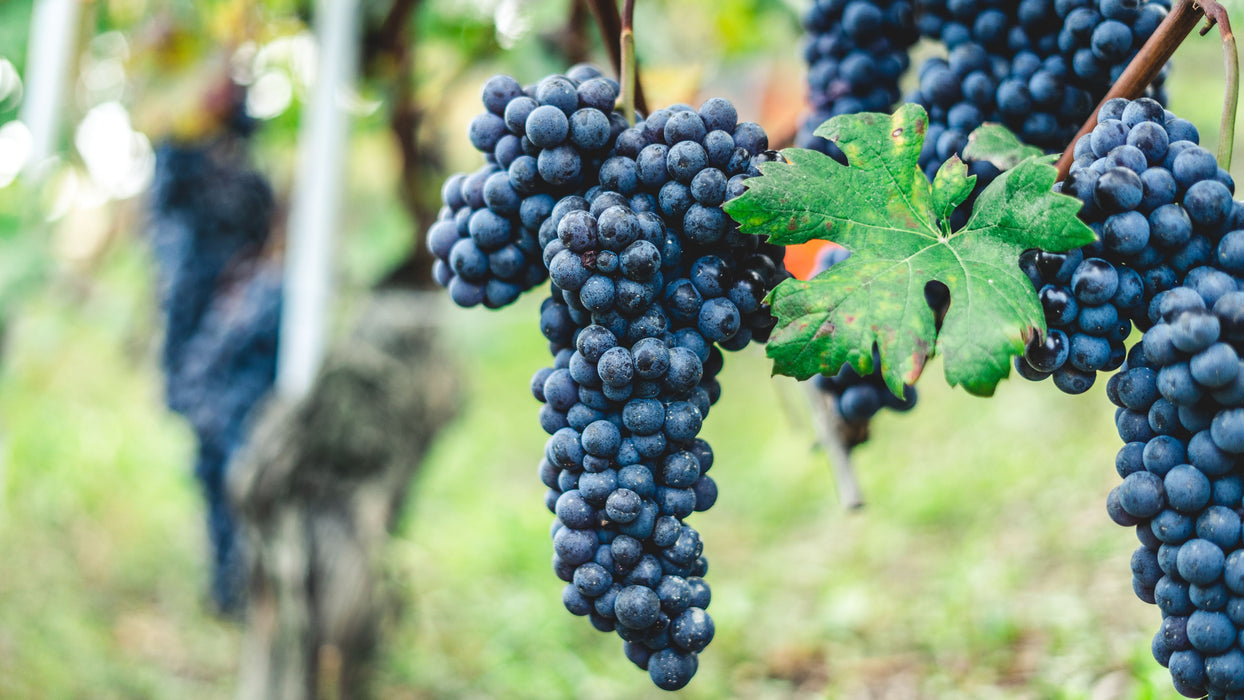
Burgundy
Ber-gun-dee
Parents & Origin: Burgundy (France)
Grape: Pinot Noir for Red Burgundy, Chardonnay (and sometimes Aligoté) for White Burgundy
Flavors: Raspberries, blackberries, cherries, spices (red); peaches, citrus, apples, herbs (white)
Notable Regions: Burgundy, France
Sweetness: Dry
Body: Medium-full
Tannins: Light
Acidity: Medium-high
ABV: 11.5-13.5%

The History of Burgundy
Burgundy wines are products of their region, with their most prominent characteristics coming from terroir, or the sense of “place” that the drinker senses as an irreplicable characteristic imparted by the vineyard onto the wine’s flavor. In fact, Burgundy wine is so shaped by its region that its relatively common grapes (usually 100% Pinot Noir for red and 100% Chardonnay for white) are redefined under the “Burgundy” name.
Winemaking has occurred in Burgundy since as early as the 2nd century A.D., and the millennia that have followed have established the region as one of the world’s best. Early Burgundy winemaking was predominantly controlled by the Catholic Church, of whom the Cistercian order was the first to notice the unique and delicate qualities imparted by particular vineyards, the precursor for the modern cru system and the emphasis on terroir. An official classification of Burgundy wines began in 1861 and was formalized on the national level in 1936 under appellations d'origine contrôlées (AOC) laws.
Burgundy vineyards saw a tumultuous 20th century. They fell into disarray during World War II, quickly recovered due to the use of artificial fertilizer, and again saw shortcomings due to overuse of fertilizer which depleted the soil’s nutrients. Thankfully, between 1985 and 1995, a passionate renewal effort took place that leads Burgundy to produce some of the world’s greatest (and often most expensive) wines.
Interesting Fact: One of the reasons behind Burgundy wines’ unique flavors and perceived high quality is speculated to be due to its history as a vast, tropical sea some 200 million years ago. This produced limestone soils that add to Burgundy’s minerality. Some limestone formations still contain fossilized sea creatures!
Burgundy Food Pairings
Due to its more moderate and balanced flavor profile, both red and white Burgundies pair with a variety of foods, particularly lighter French meats:
The Best Burgundy Food Pairings
Red Burgundy is often known to pair with simple French meals, especially things like charcuterie boards, lamb, duck, or chicken. White Burgundy complements many of the same meats, with the additions of fish, seafood, and even salad.
Food Pairings to Avoid with Burgundy
The relative lightness and delicateness of Burgundy means that it is typically not paired with rich and hearty red meat dishes (with the exception of more aged, more full-bodied red Burgundies). Aside from that, pairings to avoid generally follow the patterns of most white and red wines.
Burgundy Tasting Notes

Burgundy’s flavors are immensely varied, depending on whether the wine is white or red, young or old, and which AOC classification it has. In general, however, it can be said that red Burgundy imparts flavors of raspberry, blackberry, cherry, and even some spices or gamey flavors in older varieties. White Burgundy gives off notes of peach, citrus, apple, and fresh herbs. The finest Burgundies often have the most floral and delicate aromas. Of course, the most defining tasting characteristic of any Burgundy wine is its terroir.
Burgundy's Geographical Variations
Unlike Bordeaux, where much importance is placed on individual producers when it comes to flavor, much of Burgundy’s flavor is defined by its geography. Chablis, for instance, is an important subregion of Burgundy known for its light Chardonnays, whereas the Côte de Nuits subregion is known for its deep Pinot Noir reds. Other regions, such as Côte Chalonnaise, are known for both Pinot Noir and Aligoté, the white grape used most often in place of Chardonnay.
AOC Classifications
The French government has codified wine origins in law since 1936 under the appellations d'origine contrôlées system, commonly referred to as AOC. These classifications are extremely important in understanding Burgundy wines:
- Grand Cru wines are the best of the best, produced at designated vineyard sites that make up only 2% of Burgundian wine production. These are typically aged for two to seven years and are designed for cellaring, with delicate and subtle aromas.
- Premier Cru wines are not quite Grand Cru, but still some of the best wines available in the region, making up 12% of production. These wines are typically aged three to five years.
- Village wines make up most of the remaining Burgundy production. These wines are usually still of high quality, and they comprise grapes from a single village within the 42 villages permitted to produce Burgundy wines.
- Regional appellation wines include wines not classified under the other three categories, including blends from across the Burgundy region as well as wines that use other grapes, such as the common Aligoté grape in place of Chardonnay.
Burgundy in a Nutshell
Since its origins at the dawn of European civilization, Burgundy’s long history of winemaking has allowed it to produce some of the highest quality, most unique, and most renowned wines in the world. Burgundy is what made the Pinot Noir and Chardonnay grapes famous, and whether white or red, any wine from Burgundy is sure to impress with its delicate flavors and terroir. Best paired with charcuterie, simple French meals, and lean meats, Burgundy is an essential piece of any wine enthusiast’s collection.





